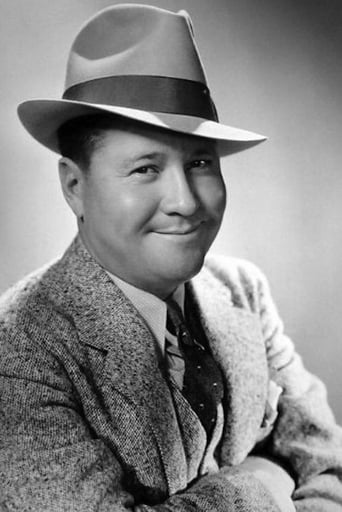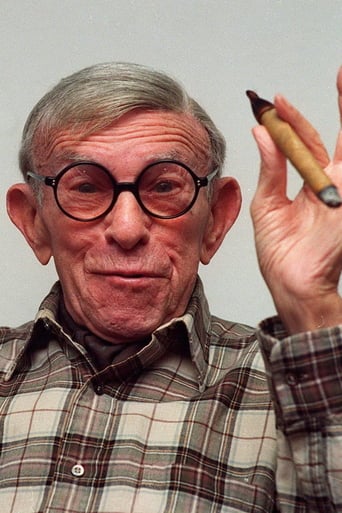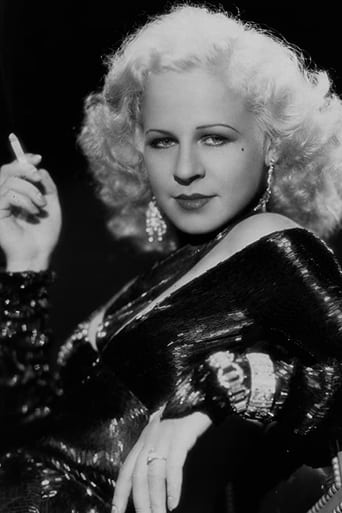Stometer
Save your money for something good and enjoyable
SpuffyWeb
Sadly Over-hyped
Greenes
Please don't spend money on this.
MartinHafer
I am not a huge fan of these sorts of old films. I much prefer classic Hollywood movies with more plot and less of a talent show look about them. This isn't to say it's a bad film, but it is terribly uneven.Jack Oakie stars in the film as Spud Miller--the owner of a dying radio station. Unless something amazing happens, he's about to lose the place. So, when George and Gracie bring him an amazing invention called Radio Eye, his problems seem to be over. However, a crazy countess kidnaps him and his alter-ego...and she's not about to let them go.The film is filled with one act after another--often with strange segues or situations that simply make no sense. For example, the first scene in the radio room has one of the Nicholas Brothers tap dancing. Well, call me a stickler for details but HOW will the radio listeners be able to enjoy LISTENING to a tap dancer?! In addition to this act, you briefly (too briefly) get to see Bill 'Bojangles' Robinson, a trio of slapstick vaudevillians (too often) and others. It runs the gamut from excellent to pure crap...and makes the film's tempo bounce like a kangaroo jumping on a water bed!
classicsoncall
"The Big Broadcast of 1936" is a veritable hodge-podge of quickly done skits and routines with the premise that they're being brought to the viewer via a newly discovered invention called the 'radio eye'. It's discovery is something of a mystery, but it's eagerly presented to radio station owner Spud Miller (Jack Oakie) by the young comedy duo of Burns and Allen. They both look incredibly young here, but by 1935 when this picture was made, they were already married for nine years after an even earlier team up. I tried to catch their TV program as much as I could back in the Fifties, so seeing them together here was a mild shocker with the way George treated Gracie, shoving her around and planting a kick to her shin every now and then. I know it was done for amusement but it just struck me in an odd way.Except for the sometimes extended cameos of celebrity entertainers of the day there's not much to recommend in the film here. Bing Crosby appears as himself in one of the 'radio eye' spots singing 'I Wish on the Moon', as does Ethel Merman with 'It's the Animal in Me' later on. Her resemblance to the young Gracie Allen had me doing a double take until I figured things out; I never did hear Gracie try to sing.The entertainment numbers are built around a main story involving the Countess Ysobel (Lyda Roberti) in love with radio personality Lochinvar the Great Lover, who turns out to be two people - Spud Miller who mesmerizes his largely female audience with romantic chatter, and his associate Smiley (Henry Wadsworth) who croons them further under the Lochinvar spell. Ysobel hijacks them both to the island of Clemente off the coast of Cuba in an effort to figure out who she'll marry, all under the watchful eye of her protector Gordoni (C. Henry Gordon), who's assembled a scrapbook collection of Ysobel's former lovers after having them done away with. Looks like Spud and Smiley will join the also-rans.The many skits range from boring to fairly entertaining, and I'm probably not too far off by stating that the animals have it here, with the Thin Man canine Asta providing a comic performance with the dead dog routine, and a small herd of elephants doing a Rockettes-like production number. When you throw in additional performances by Amos n' Andy, the Dancing Nicholas Brothers, Charlie Ruggles and the Vienna Boys Choir, it's pretty apparent that the whole picture is built on whatever they could come up with in the way of variety entertainment. As for the 'radio eye' gimmick, I don't know if it's an idea that will ever catch on.
gridoon2018
"The Big Broadcast Of 1936" is a crazy, random, trippy grab-bag of a movie that combines comedy, musical, sci-fi, and even contains a dramatic segment (the one with Gail Patrick as a nurse). A lot of it is just plain boring (the main "plot", about sexy Lyda Roberti loving two men at the same time, is slightly daring for the time but also rather tiresome), but the compensations are undeniable: some amazing tap dancing by the Nicholas Brothers; George Burns and Gracie Allen being funny as usual ("My uncle. Not the one that's living, the one that's married"); the unique Ina Ray Hutton and her Melodears; the Charles Ruggles - Mary Boland sketch; the big "It's The Animal In Me" number with Ethel Merman and a herd of dancing elephants! So this film may be EXTREMELY variable, but it's still worth seeing - and listening to. **1/2 out of 4.
tavm
In reviewing films featuring African-Americans in chronological order for Black History Month, we're back in 1935 when Paramount mounted another in The Big Broadcast revue series three years after the first one. Among the reasons I'm commenting on this entry for this occasion: dancers Harold and Fayard Nicholas as well as Bill "Bojangles" Robinson-all of whom are quite entertaining-not to mention The Dandridge Sisters-Dorothy, Vivian, and friend Etta Jones though I have to admit I didn't recognize them during their brief appearance. In summation, there's some hilarious comedy from George Burns and Gracie Allen but the actual plot of radio station owners Jack Oakie and Henry Wadsworth being involved with a couple of ladies isn't all that funny until the chase scene at the end. Then there's also some unrelated sketches involving Amos 'n' Andy (once again, Freeman Gosden and Charles Correll in burnt cork), Charlie Ruggles and Mary Boland, and a running gag of some men trying to build a house that were also highly amusing. And there's some pretty good musical instrumentals led by Ray Noble and Ina Ray Hutton (like me, a Chicago native) and just as good vocal spots from Bing Crosby and Ethel Merman with the latter doing a number originally meant for We're Not Dressing. So on that note, The Big Broadcast of 1936 is no great shakes but if you're curious about this sort of thing, it's worth a look.




